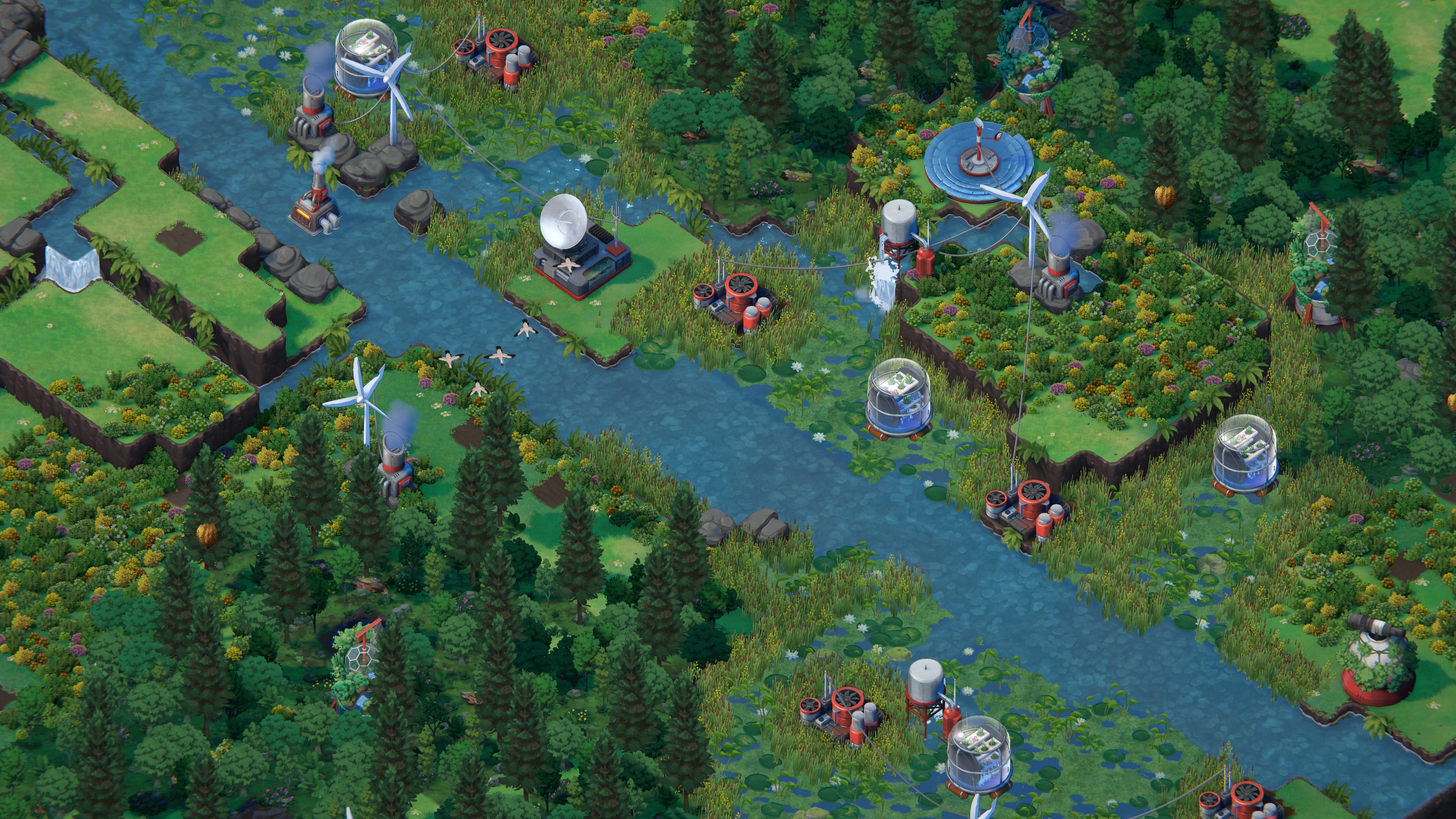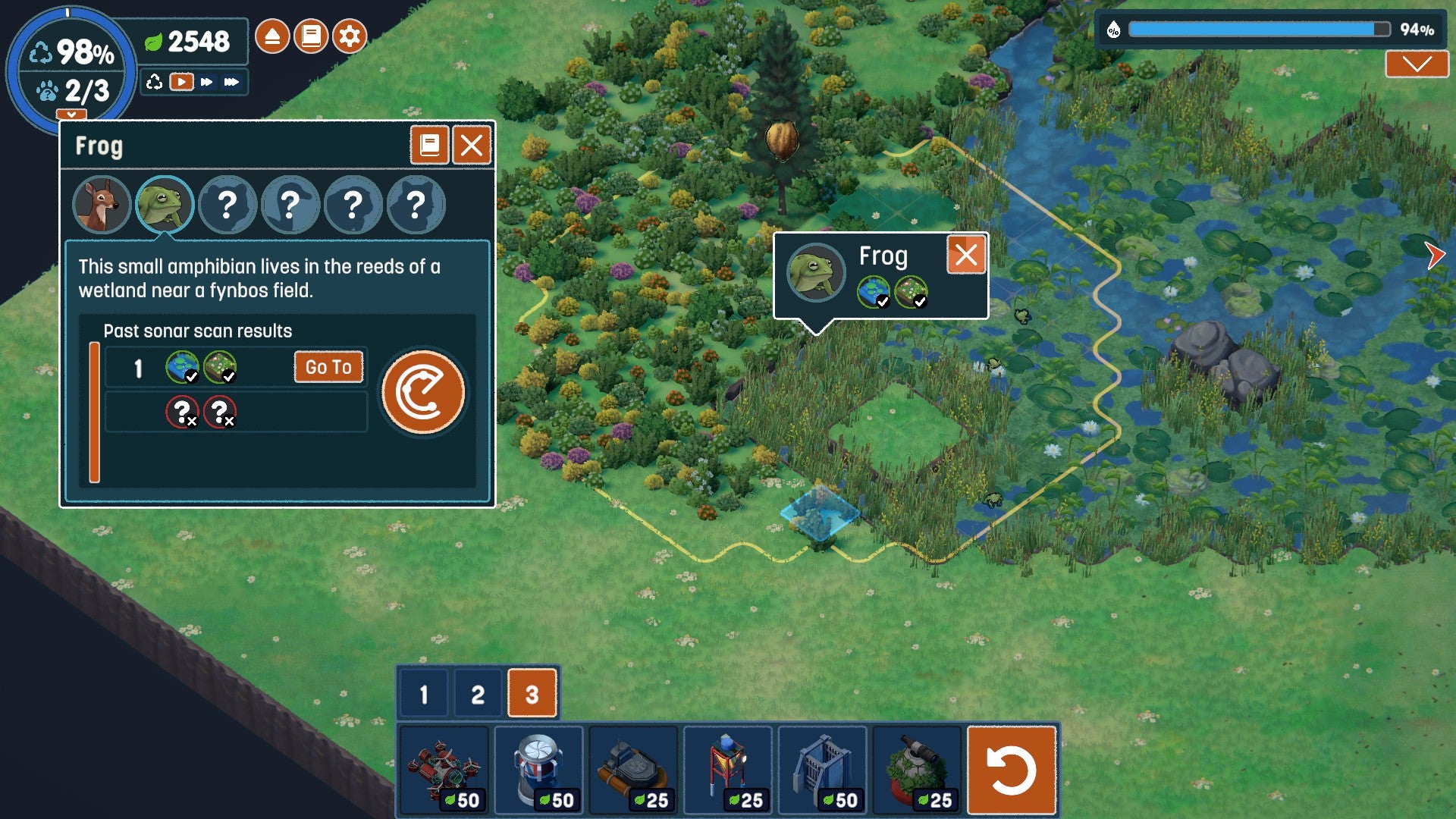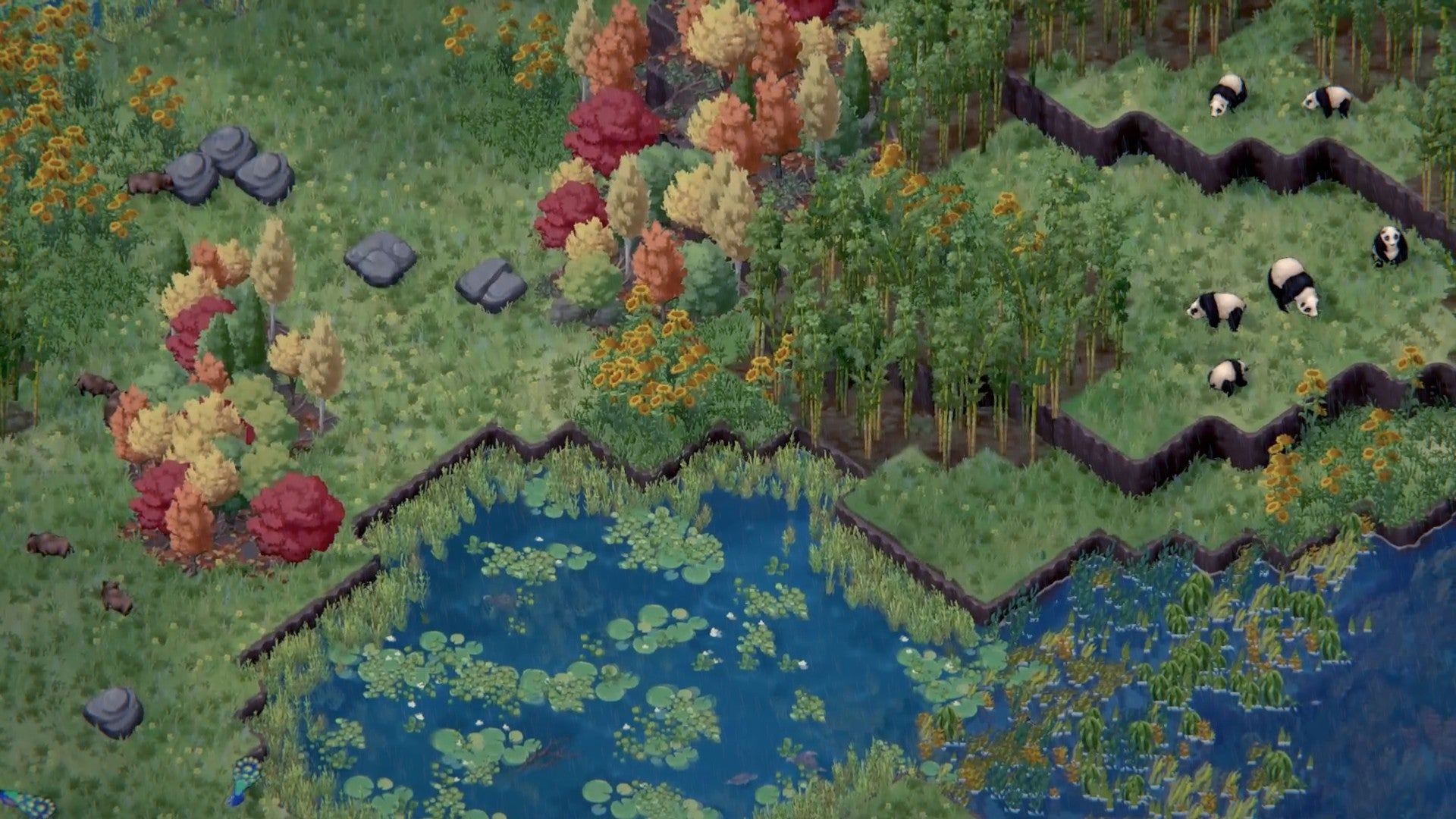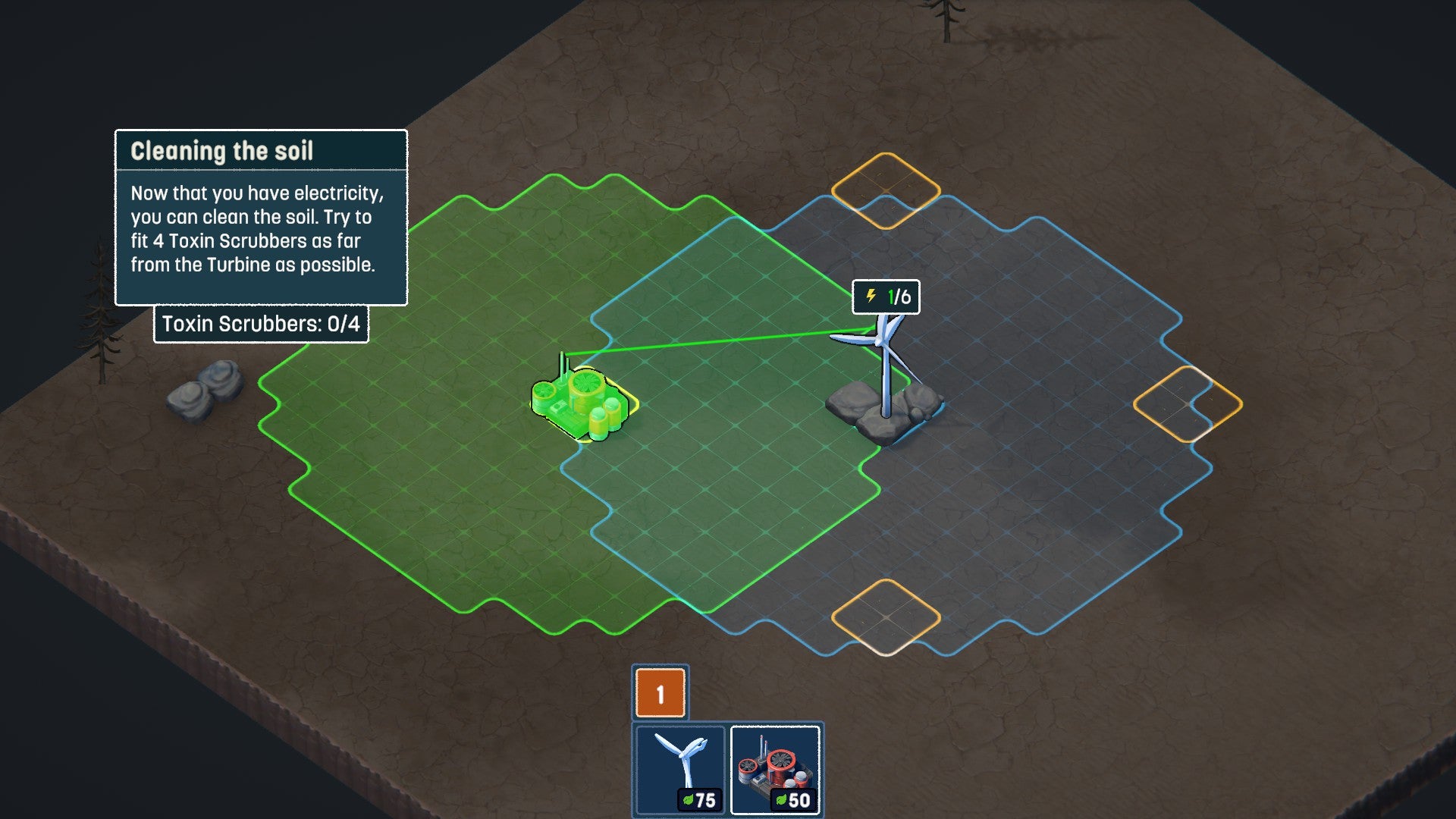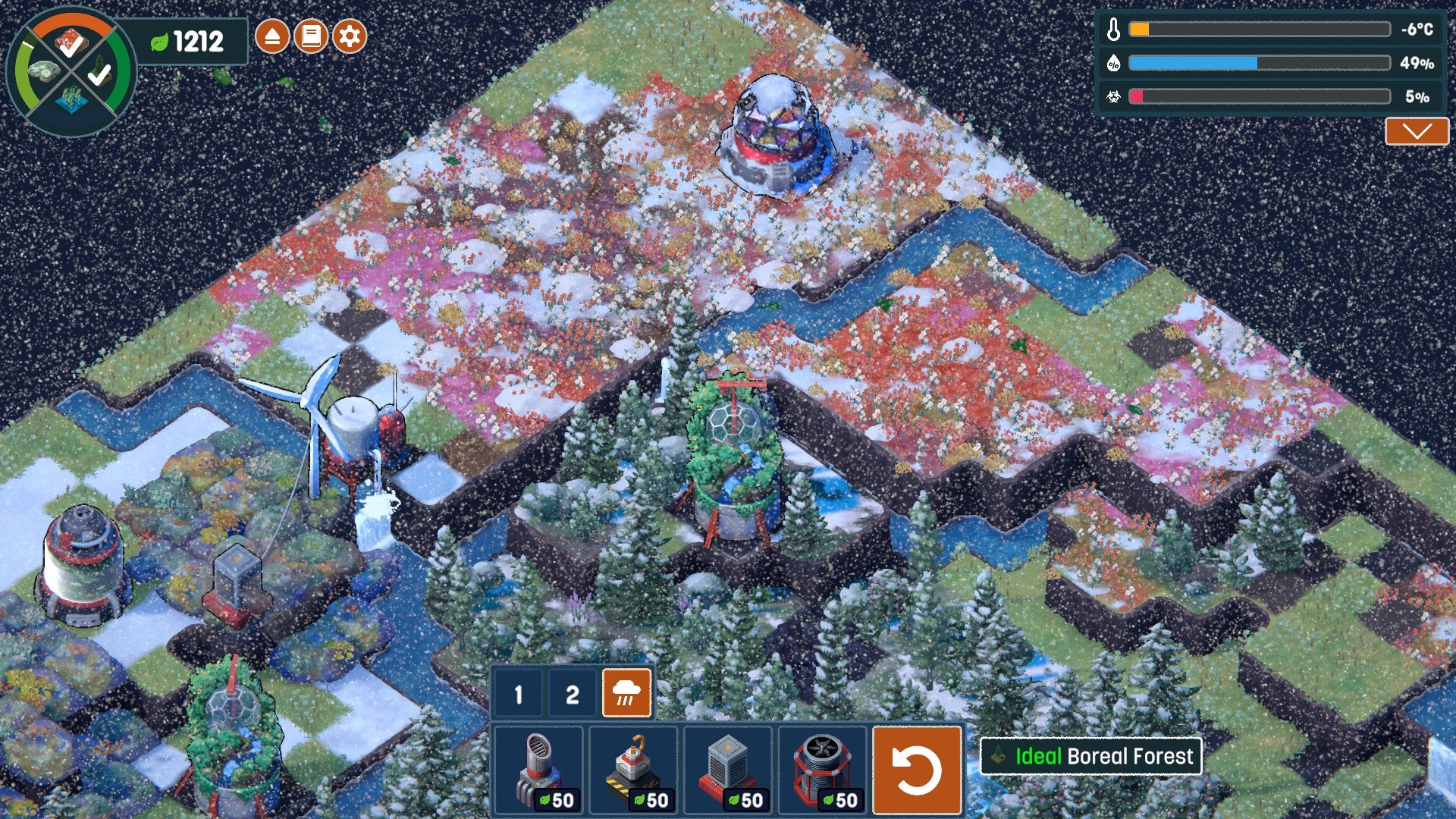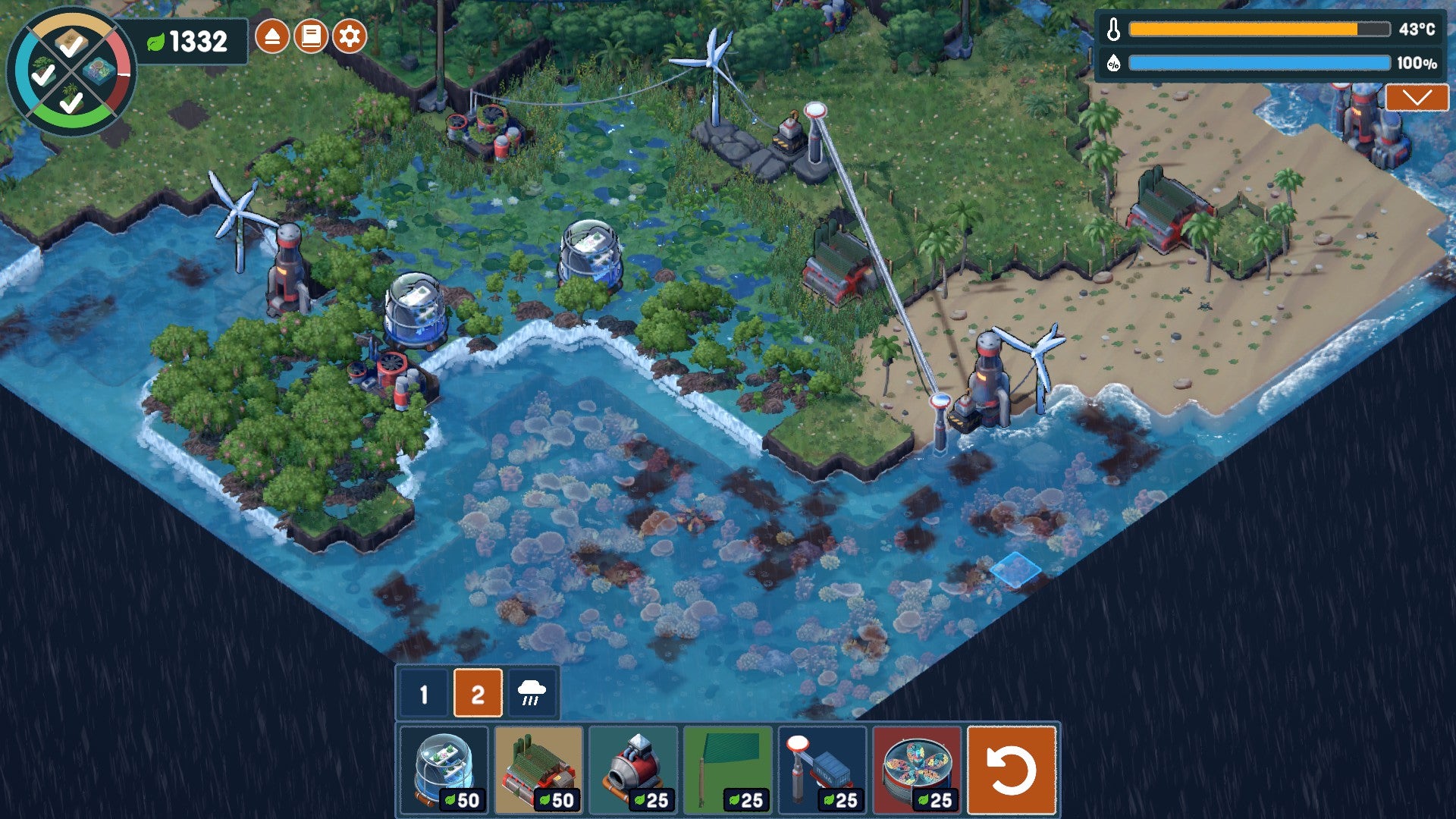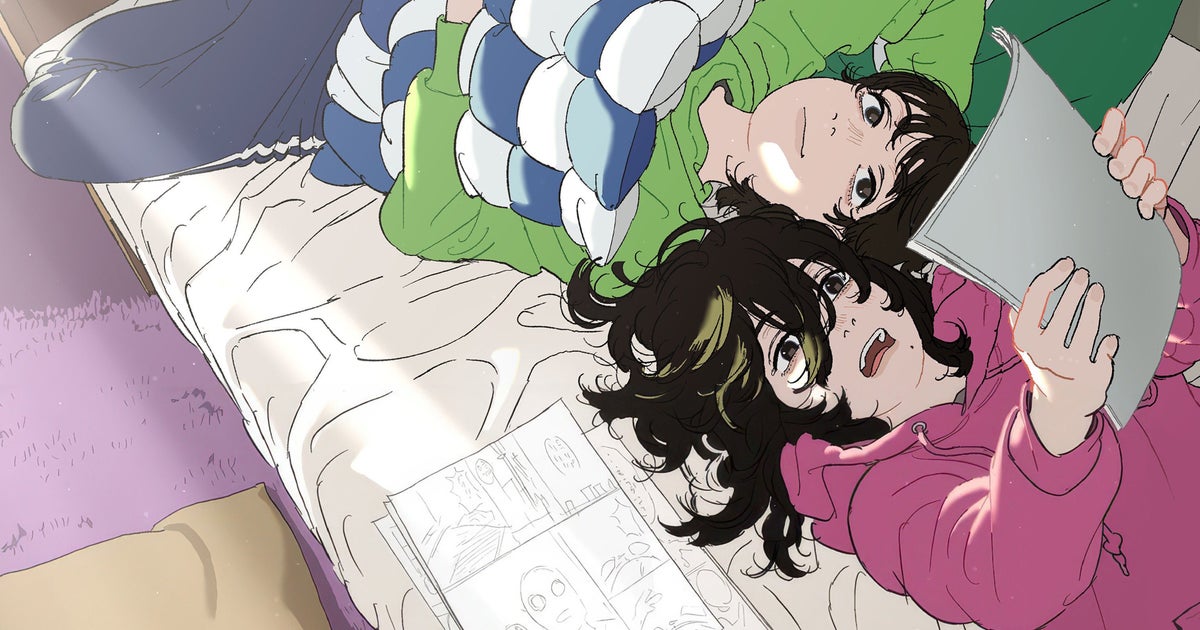The first level of Terra Nil feels perfect. What you give to the land and what you take from it renew each other, so to restore a barren quarry to a thriving ecosystem, you start small. Unlike the city-builder practice of extensively planning infrastructure, you focus on small plots of land – one wind turbine and a handful of toxin scrubbers to clean the earth at a time, paid by the irrigators you place to restore grasslands and most importantly.
With the base set in place, the next task was to restore the local biomes, including wetlands, forests, and bushland. Turning one of your irrigators into a hydroponic plant and watching it ripple out into wetlands, or placing a beehive and then hearing flowers and bushes pop up, is both tactile and immediately gratifying.
At the same time, it’s clear that you can’t zone the land as freely as an architect or even a gardener. For a moment, when I wished it would only burn the flowers I was aiming at, I started to control the burn – just to let the fire reach the natural boundaries of cliffsides and watersides. While I was able to drop the humidity raising machine to bring back the rainstorm (and the salmon and moss), the rainwater itself does a better job of cleaning it than I do.
When the biome reaches balance and native animals return to their ideal habitat, it’s time to recycle everything, leaving only a self-sustaining ecosystem. Before this point, it was easy for me not to see the whole picture, as I focused on small hills, lowlands, and small groups of buildings, after which cleanup became the emerging “revelation” of everything I was doing. There is an option to “enjoy” it, with the camera gently panning across the new landscape, before moving on to the next level.
The balance between the relaxed vibe of the first area and the smooth, thoughtful progression sets a high bar for the subsequent stages—trading that fluidity for experimentation as they grow in complexity and difficulty. There are four areas in total, plus unlockable endgame maps, each with their own unique visuals, mechanics, and challenges.
Lateral thinking takes a significant boost, and while I wouldn’t call Terra Nil a difficult game, the later stages have room for more “puzzle” shapes, where it’s possible to find the wrong solution first. I was surprised to find myself needing to restart stages – sometimes entire maps – because I’d cornered myself.I can clear soil, or place biomes, but not enough Pass the given stage – or I just run out of resources, although it can be turned off in “Zen Mode”. Unexpectedly, began to play detective, and the ensuing ‘aha‘ moment, more than make up.
The scope for lateral thinking increases significantly, as biomes have their prerequisites – and their prerequisites can have prerequisites. So maybe the humidity is too low to place a particular building, but placing a cloud seeder around my natural water source won’t have enough of an impact.I could open up more channels, or create tiny oceanic islands to build on – but either risk reducing land availability other biomes, it may always turn out that raising the humidity now causes problems for placing different buildings later. It’s a delicate ecosystem and a problem-solving network.
The new mechanics in each region do allow for wonderful satisfying moments. For example, in polar regions, you start digging fissures in hot lava – which raises the ambient temperature as a side effect. When it reaches above zero, all snow on the map will melt, revealing a previously inaccessible Earth. At a later stage, you have to convert the lava into rock, which lowers the temperature…with the right amount of humidity and toxicity, fresh snow starts falling again, cleaning the seawater and any remaining bare soil. Accidental, urgent moments like this happen on every map, and they’re always compelling.
These fantastic moments are indeed balanced with some not-so-smooth experiences. For example, many of your biome buildings are salvaged from irrigators or toxin scrubbers. But when the UI encourages you to put as little of these things as possible in the first place, it’s annoying to drop new, wasteful, orange inefficient tiles just to recycle them – like I’m a guy who just discovered recyclable Pallet furniture guys, and go to eBay to buy new wooden pallets.
It can also be overly clicky in places, such as the monorail system, which transports goods from land to sea, and recycles its surroundings. Building a monorail network to reclaim every building on the map, then issuing commands to reclaim 20 or 30 nodes individually (in order so you don’t break the network) makes me happy to have an ergonomic mouse, at least It can be said.
Since much of its design revolves around environmentalism, I have one major qualm with Terra Nil: the absence of humans goes from ambiguous to conspicuous in the context of the game as a whole. It’s clear that the setting is a post-climate catastrophe, and the narrative makes it clear that there’s nowhere to go on an entire planet. Your exit is the happy ending of each level. When much of its gameplay revolves around sustainability — growing regeneratively, rather than taking more than it can give — it feels jarring to imagine that it’s only possible in an ecosystem where all humans disappear , and fatalism.
Even where Terra Nil makes choices that I don’t always like, I love that it does make these novel, ambitious choices. More than the benign atmosphere it might seem to suggest on the surface, Terra Nil offers engaging puzzles, an all-encompassing commitment to environmental city-builders, and lingering moments of genuine perfection.
iGamesNews

